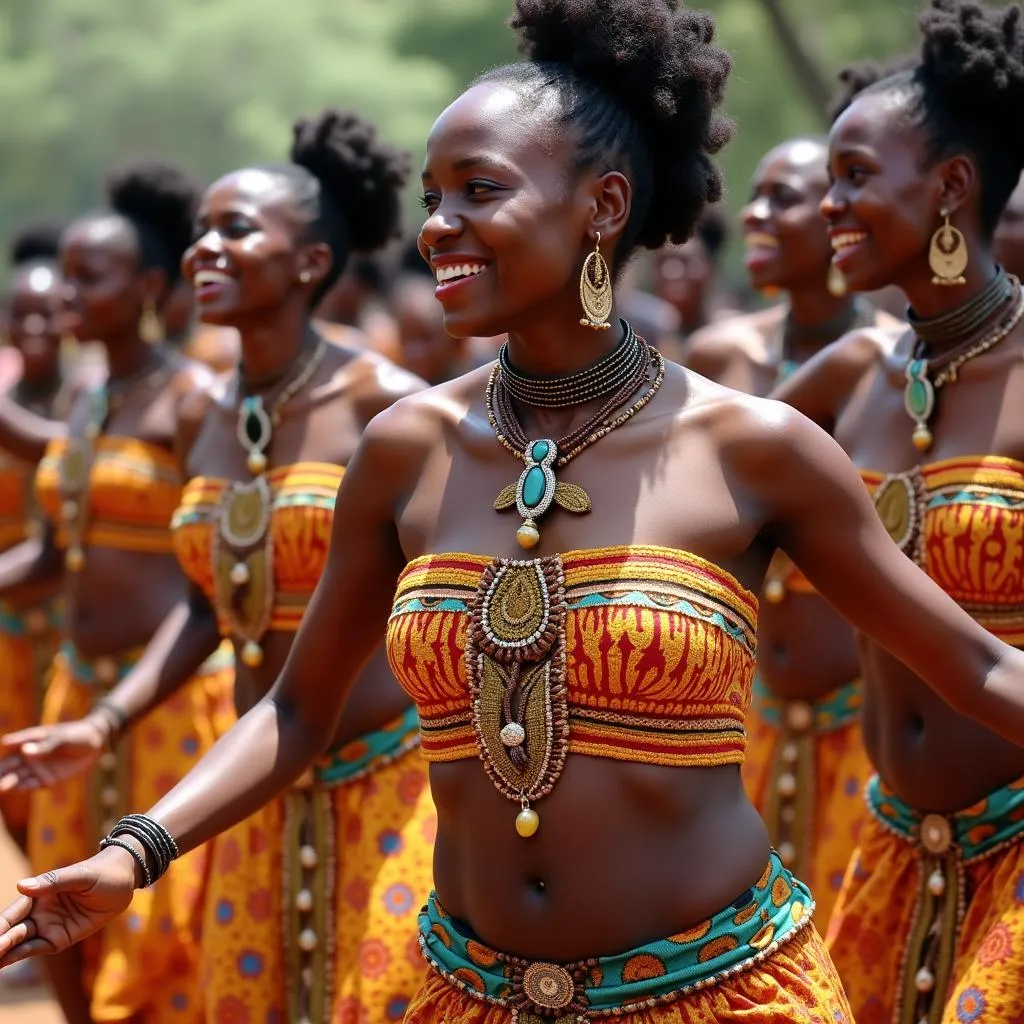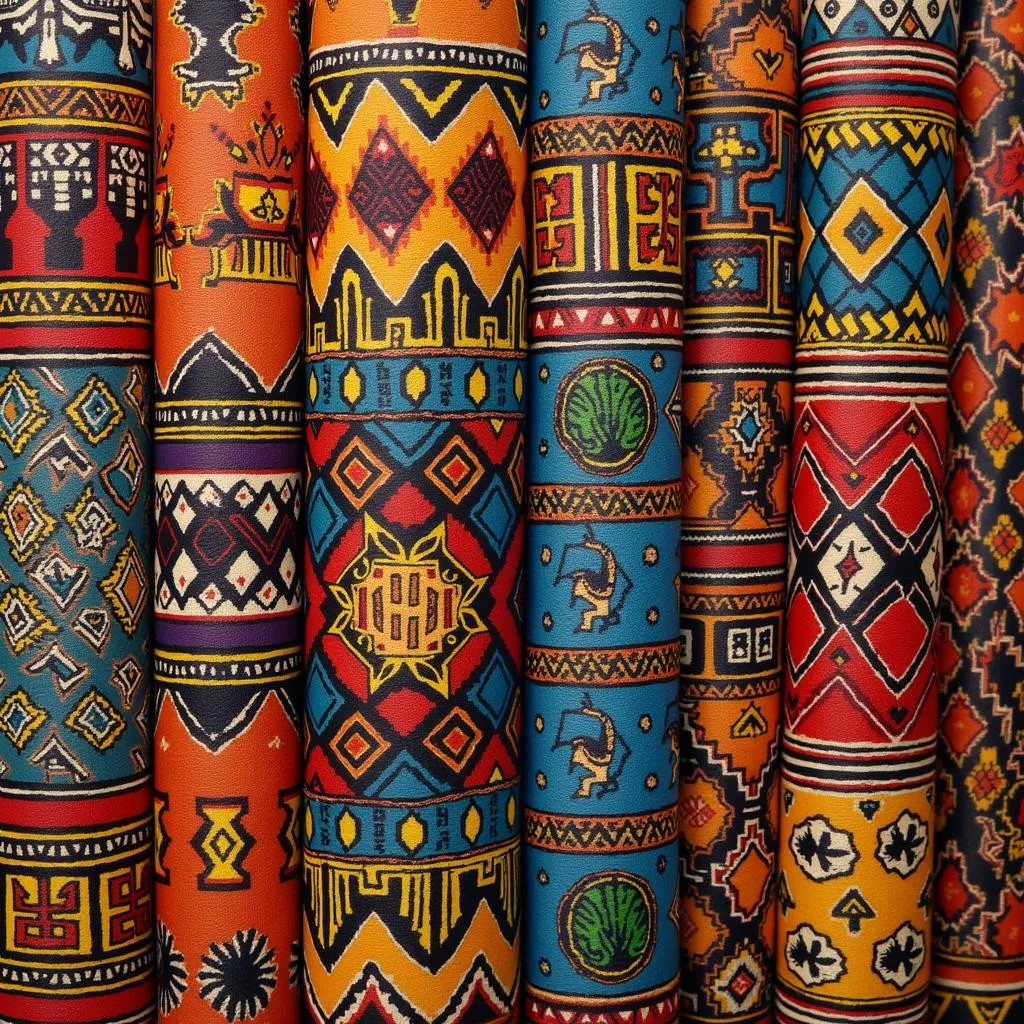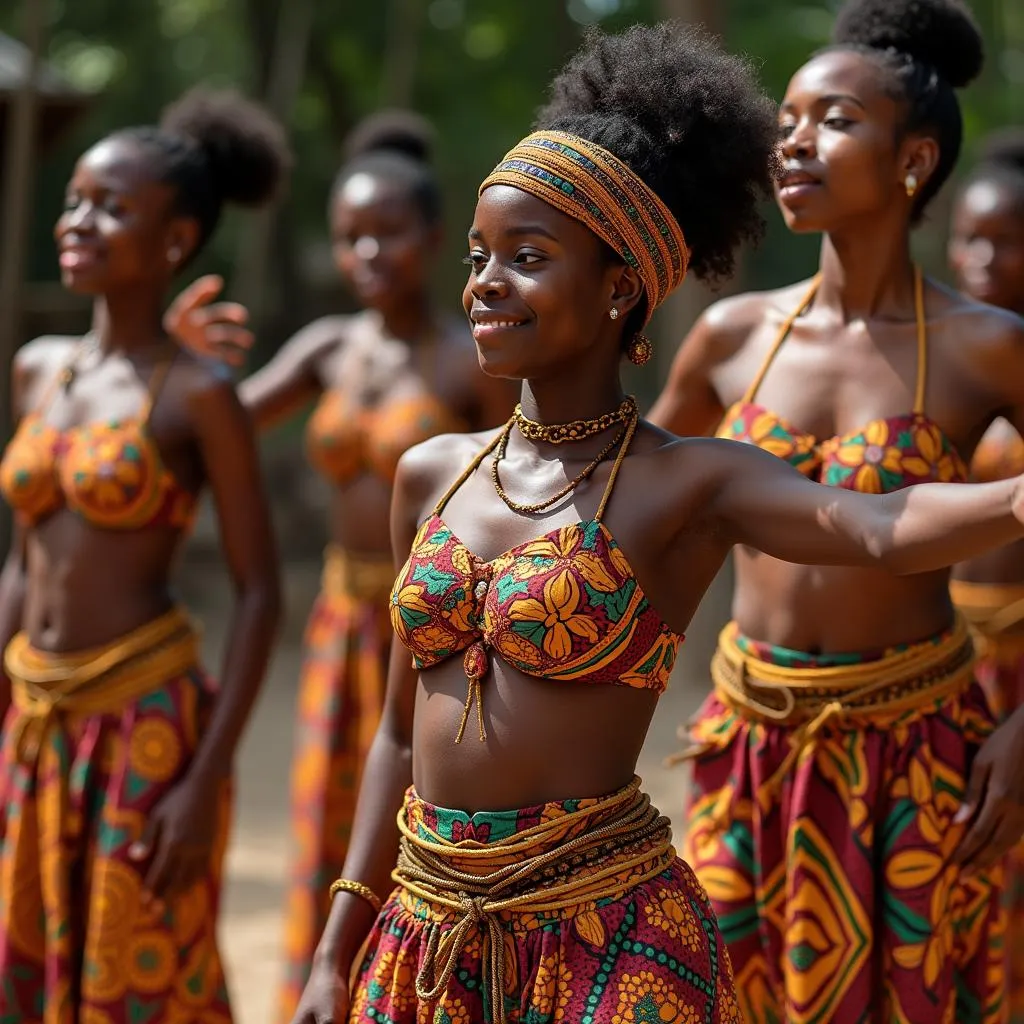Exploring the Vibrant Tapestry of African Cultural Forms
African culture is a vast and rich tapestry, woven together by centuries of traditions, beliefs, and artistic expressions. From the rhythmic pulse of music to the vibrant colors of textiles, the continent’s cultural forms offer a glimpse into the soul of its people. This article will delve into the diverse and captivating aspects of African Cultural Forms, unveiling the stories behind the dances, art, music, cuisine, and customs that define the continent.
The Rhythmic Heartbeat: African Music and Dance
African music is more than just entertainment; it’s a vibrant expression of life, rituals, and storytelling. From the energetic drumming of West Africa to the soulful melodies of South Africa, music permeates every aspect of society. The rhythms and harmonies reflect the spirit of the people, their joys, sorrows, and spiritual beliefs.
“Music is the soul of Africa. It’s how we communicate, how we celebrate, how we mourn, and how we connect with our ancestors,” says Dr. Amina Diallo, a renowned ethnomusicologist.
Dance, intimately connected to music, plays a pivotal role in African culture. Traditional dances are often ritualistic, conveying messages about fertility, harvest, war, and social cohesion. They are not just movements but a language, a way to connect with the spiritual realm and express emotions.
 African Traditional Dance Rituals: Celebration and Expression
African Traditional Dance Rituals: Celebration and Expression
Artistic Expressions: Visual Arts and Crafts
African art is a testament to the continent’s creativity and ingenuity. It ranges from the majestic sculptures of ancient civilizations to the vibrant textiles of contemporary artists. The art forms often reflect the diverse landscapes, wildlife, and cultural beliefs of different communities.
“African art is not just beautiful; it tells stories, it conveys messages, and it connects us to our past,” explains Professor Olusegun Olatunji, an art historian specializing in African aesthetics.
Carving, sculpting, pottery, and weaving are just a few of the artistic mediums employed across the continent. The intricately carved masks, wooden figures, and pottery vessels serve both aesthetic and spiritual purposes. Textiles, intricately woven with colorful threads, often depict intricate patterns and symbols representing cultural beliefs and narratives.
 Traditional African Textiles: Patterns and Symbolism
Traditional African Textiles: Patterns and Symbolism
Culinary Delights: The Flavors of Africa
African cuisine is a testament to the continent’s diverse geography and rich agricultural heritage. From the fiery spices of the west coast to the slow-cooked stews of the east, each region boasts its unique culinary traditions.
“African food is a celebration of life, a coming together of families and communities,” says Chef Adisa Olowe, a renowned culinary expert specializing in African cuisine.
Fresh ingredients, often grown locally, are used to create vibrant dishes that tantalize the taste buds. Popular dishes include jollof rice, a flavorful rice dish infused with spices, and fufu, a doughy staple enjoyed with stews and sauces. The continent’s diverse culinary landscape reflects the ingenuity and resourcefulness of its people, adapting to their environments and creating delectable dishes.
The Power of Tradition: Customs and Beliefs
African culture is deeply rooted in tradition, passed down through generations. These customs and beliefs govern daily life, social interactions, and spiritual practices. The importance of family, community, and respect for elders is central to most cultures.
“Our traditions are our compass, guiding us through life and connecting us to our ancestors,” explains Chief Kwame Adjei, a respected elder from Ghana.
Traditional ceremonies, festivals, and rituals play a vital role in preserving cultural identity. They often celebrate life events, mark seasonal changes, or honor the ancestors. These gatherings are a testament to the deep connection between the present and the past, ensuring the continuity of traditions.
The Future of African Cultural Forms
Despite facing challenges such as colonialism, globalization, and urbanization, African cultural forms continue to thrive. Artists, musicians, and cultural practitioners are finding innovative ways to preserve and share their heritage. The global recognition of African music, art, and cuisine is a testament to the enduring power of cultural expression.
 Preserving African Cultural Heritage: The Role of Youth
Preserving African Cultural Heritage: The Role of Youth
FAQs
What are some of the most common African cultural forms?
Some of the most common African cultural forms include traditional music and dance, visual art, textiles, storytelling, crafts, cuisine, and customs.
How do African cultural forms influence modern society?
African cultural forms influence modern society by contributing to the arts, fashion, music, cuisine, and global cultural dialogue. They inspire creativity, promote diversity, and foster a deeper understanding of different cultures.
What are some ways to learn more about African cultural forms?
You can learn more about African cultural forms by visiting museums, attending cultural events, reading books and articles, watching documentaries, and engaging with online resources. You can also connect with people from different African communities and learn about their traditions firsthand.
Conclusion
African cultural forms are a vibrant expression of the continent’s rich history, diverse communities, and enduring traditions. They offer a window into the soul of Africa, showcasing the resilience, creativity, and spirit of its people. Exploring these cultural forms allows us to appreciate the beauty and depth of human expression and fosters a deeper understanding of the world around us.
